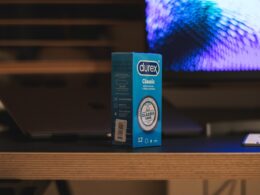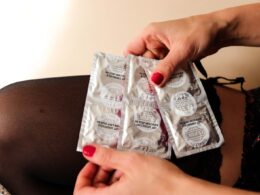We all know it’s important to use a condom when sexually active, as they protect against STIs and pregnancy. But it’s also important to use the right size and brand, and to put them on correctly.
It’s also important to change the condom after ejaculation, and to avoid contact between the penis and vagina.
Pre-ejaculation
Premature ejaculation (PE) is common, but it can be a frustrating problem for both the person experiencing PE and their sexual partner. It is important to communicate openly with your partner about PE so that you can find the solution that works best for you. There are many techniques that can help you overcome PE, including anaesthetic creams that decrease the sensitivity of your penis and sex training.
Anesthetic creams can be bought over-the-counter and are applied to the head of your penis before sex. They decrease the feeling in your penis but must be washed off before you have sex. There are also anaesthetic condoms that can be worn and that decrease the sensation of the penis and the vagina. These can be used in place of regular condoms and can reduce the feeling of sex for up to 30 seconds before your orgasm.
Masturbation is a great way to prepare for sex and can help you last longer during sex. However, it is important to use lubricant when masturbating and to wash your hands afterward. This will prevent infections, like urinary tract infections. It is also important to stop masturbation when you feel that you are about to ejaculate. It can be hard to stop, but you should try to stop before you ejaculate, as this will decrease the amount of semen that you eject.
Post-ejaculation
Ejaculation occurs when semen leaves the penis through the urethra. During sexual intercourse bacteria or germs may ascend into the urethra, and if they enter the bladder, they can cause a urinary tract infection (UTI). Urinating after sex helps flush out these bacteria, reducing the risk of UTIs for men and women.
If you can’t urinate after sex, drink water instead to help flush out the bacteria. Ideally, you should urinate shortly after sex, within 30 minutes. This practice also reduces the chance of a vaginal or penile yeast infection.
Both men and women should wash their genitals after sex, particularly if they use sex toys. Failing to wash the genitals can increase the risk of urinary tract infections, including cystitis and vulva thrush.
If you suffer from frequent premature ejaculation, try to learn how to delay your orgasm. Some methods include the pause-squeeze technique, which involves stopping sexual stimulation just before orgasm and then starting up again when the level of arousal has diminished. You can also try using a desensitizing condom, which contains numbing agents such as benzocaine or lidocaine and are usually made of thicker latex. These are available without a prescription and can be found in the Trojan Extended Pleasure and Durex Prolong brands, among others.
After a break
Many STDs have no symptoms and only a sex infection test can confirm if you have one. If you think you may have an STD, it’s important to get tested regularly. You can also take precautions to protect yourself from infections like UTIs by peeing after sex, washing around your vagina or penis with plain water and not sharing sex toys that could spread germs.
If you have a problem with delayed ejaculation, talk to your doctor for reassurance and advice. They can assess to find out what’s causing it and offer treatment options.
A break in a condom during sex can lead to the spread of bacteria and viruses that cause STDs, as well as yeast infections, which are common in men and women. It’s possible to prevent condom breakages by washing your hands before and after sex, using a lubricant with a high spermicidal index (SI), and making sure your sex toys are clean. You can avoid breakages by wearing cotton underwear and avoiding tight-fitting clothing that traps heat and moisture. Washing around your genitals helps too, as does not douching after sex, which can flush out your natural linings and barriers to infection.
After a climax
Having an orgasm is a full-body experience. You feel a tingling in your eyes, your skin feels more sensitive, and even your penis might start to feel moister or warmer. This is because your brain sends signals to your genitals to begin getting ready for climax. During orgasm, a condom can feel too tight to be comfortable, or it might burst. If this happens, it’s important to change condoms.
If you want to avoid this problem, try unrolling the condom a little before putting it on. This can make it easier to slide on, and it will leave more space for semen to collect. You can also use lubrication to help prevent friction during sex. However, it’s best to stick to a water-based lubricant since oil-based products can damage or disintegrate the latex condom.
Another way to avoid a condom break is by using a special “climax control” condom, which contains numbing ingredients like benzocaine or lidocaine to delay ejaculation. These are available without prescription and are usually made of thicker latex than regular condoms. You can also practice the pause-squeeze technique, which involves stopping sexual stimulation right before orgasm and then slowly increasing it again afterward. If you’re having trouble reaching or sustaining an orgasm, consult with a sex therapist or health care provider for advice.





